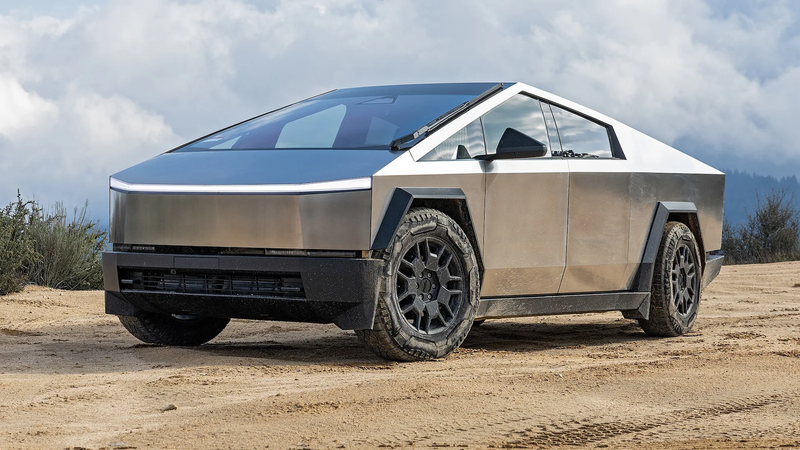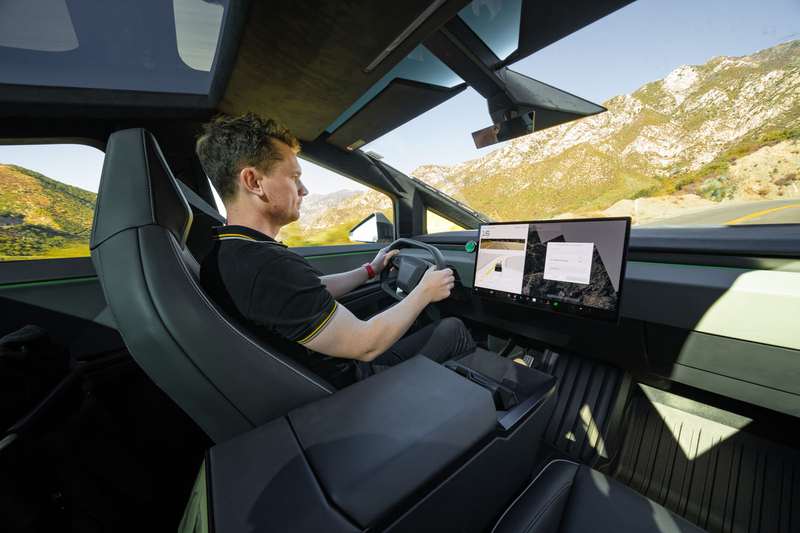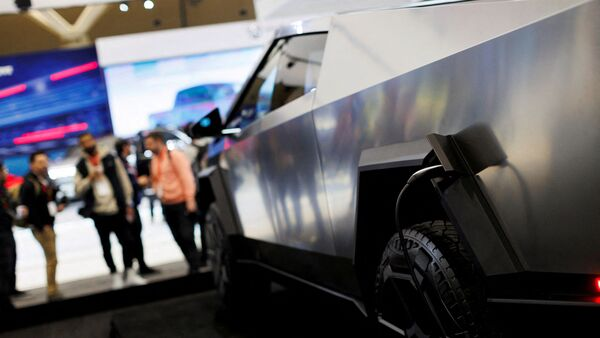Cybertruck’s Struggles: Tesla’s Bold Gamble Faces Harsh Reality
Input
Modified
Discounted Prices, Disappointing Sales: Why the Cybertruck Isn’t Taking Off Broken Promises: The Reality of Tesla’s Self-Driving Software Too Futuristic for the Mass Market? The Cybertruck’s Design Dilemma

Discounted Prices, Disappointing Sales: Why the Cybertruck Isn’t Taking Off
The Tesla Cybertruck was initially met with excitement and anticipation, heralded as a game-changer in the electric vehicle (EV) market. Elon Musk’s bold vision for the Cybertruck, which promised futuristic design, rugged performance, and cutting-edge technology, captivated millions of potential buyers. However, as the truck began to roll out into the market, it soon became apparent that this ambitious project was facing significant hurdles. Now, with Tesla offering discounted financing to boost sales, it’s clear that the Cybertruck has not lived up to the hype. Despite price reductions and various attempts to salvage its performance, the Cybertruck’s sales have fallen far below expectations, leaving many to wonder if this electric truck will ever live up to its original promise.
Tesla’s decision to offer discounted financing on the Cybertruck is an indication of the challenges it faces in moving units. The $6,000 discount offered to buyers was initially expected to lure in more customers, but it has so far done little to significantly increase demand. Many believed that this price reduction would entice buyers who were on the fence about purchasing the truck, but the result has been underwhelming.
Even with a substantial discount, Tesla has struggled to achieve the level of success it envisioned for the Cybertruck. The truck, once heralded as a breakthrough in automotive design, has instead gathered dust in dealerships and on parking lots. Tesla’s approach to marketing and selling the Cybertruck was based on the assumption that the truck’s revolutionary design and futuristic features would be enough to draw in consumers. However, the reality has proven that there are limits to how much novelty can sustain sales in a highly competitive market.
The market for electric trucks is still developing, and while Tesla enjoys a significant lead in the EV space, it is facing increasing competition from other automakers. Companies like Rivian, Ford, and General Motors are working hard to gain market share in the electric truck market with models like the Ford Lightning and the Rivian R1T. These competitors offer more conventional designs that appeal to a broader range of customers. While Tesla’s Cybertruck remains unique, it has failed to capture the interest of enough mainstream truck buyers who prioritize practicality and familiarity over bold design.

Broken Promises: The Reality of Tesla’s Self-Driving Software
One of the most ambitious features Tesla touted for the Cybertruck was its self-driving capabilities. Tesla has long promoted its Full Self-Driving (FSD) software as the future of driving, promising that it would eventually allow vehicles to drive autonomously with little to no input from the driver. For the Cybertruck, this promise was expected to be a major selling point, positioning the vehicle as not just a truck, but a technological marvel.
However, the reality of Tesla's self-driving software has been far from what was initially promised. The software has faced numerous issues, including delayed updates, inconsistent performance, and, more worryingly, accidents that have raised alarms about the system’s safety. The most recent crash involving a Cybertruck has drawn particular concern, with critics questioning the reliability of Tesla’s self-driving technology. These concerns have further dampened consumer confidence in the vehicle, especially for those who were initially drawn to the Cybertruck for its futuristic, autonomous capabilities.
Self-driving features, which are still in their early stages, require significant refinement to be both practical and safe. Tesla’s aggressive push to market its FSD software as a finished product has been met with skepticism, and incidents involving the software have only served to highlight its shortcomings. For many potential buyers, the promise of autonomous driving is no longer enough to justify the purchase of a vehicle, especially one as expensive and unconventional as the Cybertruck.

Too Futuristic for the Mass Market? The Cybertruck’s Design Dilemma
While the Cybertruck’s design was intended to break the mold and appeal to a new generation of truck buyers, it has instead turned off a significant portion of traditional truck enthusiasts. The Cybertruck’s angular, metallic exterior and unconventional look, while eye-catching and innovative, may have been too much of a departure from the designs that many truck buyers are used to.
For years, the truck market has been dominated by models with more traditional designs that prioritize functionality and ruggedness. The Cybertruck, with its sharp lines and futuristic aesthetic, looks nothing like the typical pickup truck. While some have embraced its bold design, many others have been put off by it, preferring the classic truck look with familiar features. Truck buyers tend to be conservative when it comes to design, and the Cybertruck’s appearance may simply be too radical for a large segment of the market.
In addition, the Cybertruck’s futuristic appearance may have attracted a niche audience of tech enthusiasts and early adopters, but it has struggled to gain traction among the broader group of truck buyers who prioritize practicality over style. The traditional pickup truck market is known for its loyal customer base, who often value utility, towing capacity, and off-road performance over flashy features. While the Cybertruck may appeal to those looking for something unique, it has failed to convince mainstream truck drivers to make the switch from their trusted, familiar vehicles.
One of the most memorable incidents in the Cybertruck’s short history occurred during a demonstration event when the truck was shown getting stuck in a small amount of snow. While the incident may have been a minor issue, it highlighted the practical challenges that the Cybertruck faces in real-world conditions. As a vehicle designed for tough, off-road environments, it was disappointing to see the truck struggle with something as simple as navigating a little snow.
This incident raised questions about the Cybertruck’s real-world performance and its ability to live up to the tough, rugged image that Tesla had created for it. While the truck’s design and features may appeal to some, its performance under challenging conditions remains a point of concern for potential buyers. Truck enthusiasts, who value reliability and functionality in their vehicles, may be hesitant to purchase a truck that has demonstrated such vulnerabilities.
The Cybertruck’s journey from revolutionary concept to struggling sales has been a surprising turn of events for Tesla. The vehicle, once poised to redefine the electric truck market, is now facing a series of hurdles that have significantly impacted its success. From issues with self-driving technology to design challenges and real-world performance problems, the Cybertruck’s potential seems to have faltered at every turn.
While discounted financing and price reductions may provide some short-term relief, they are unlikely to solve the fundamental issues that are holding the Cybertruck back from becoming a true sales success. For the Cybertruck to succeed, Tesla will need to address both the practical shortcomings of the vehicle and its failure to appeal to a broader audience of truck buyers. Only time will tell if the Cybertruck can overcome these challenges, but for now, it appears that this once-promising vehicle may struggle to find its place in the competitive automotive market.





















